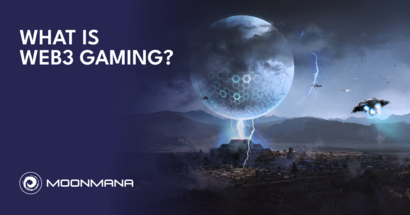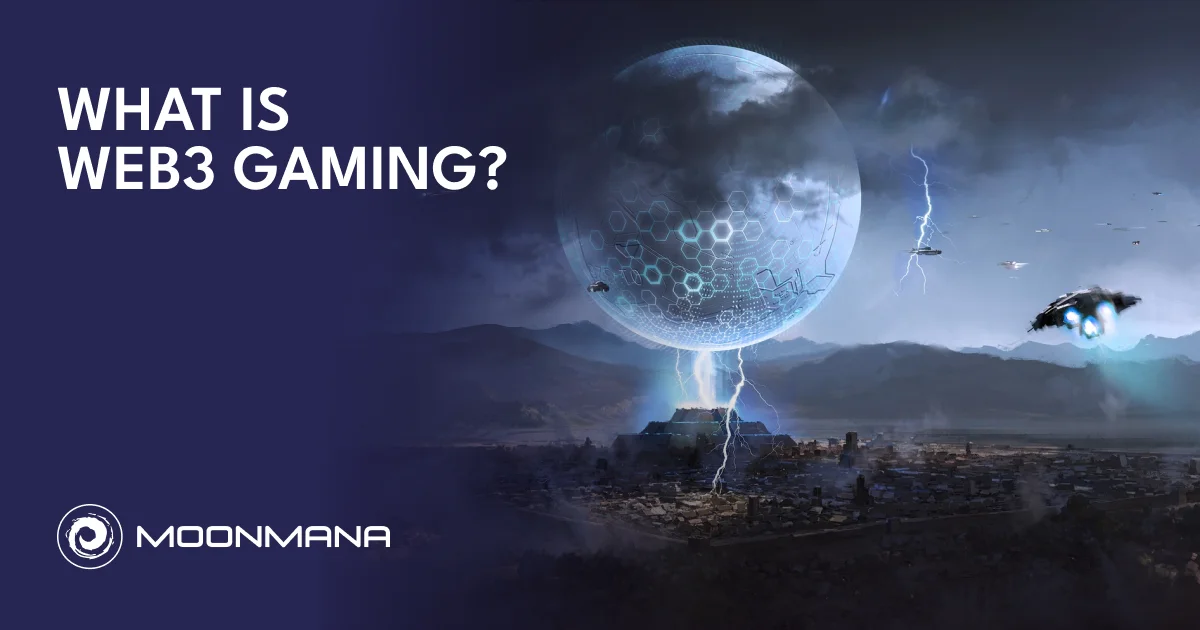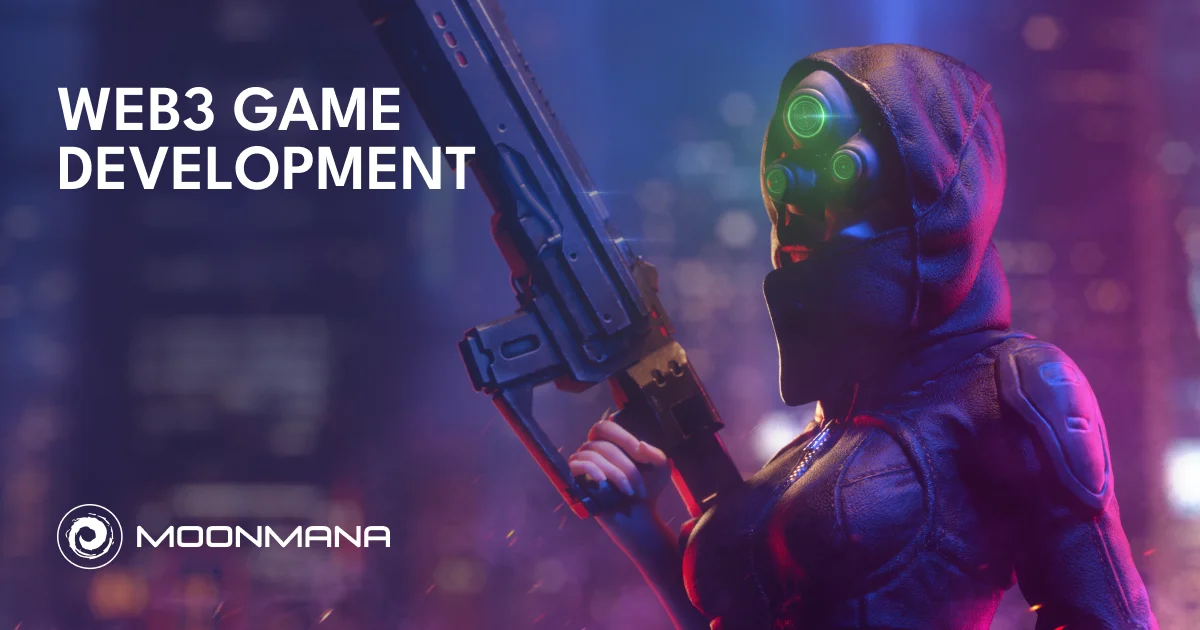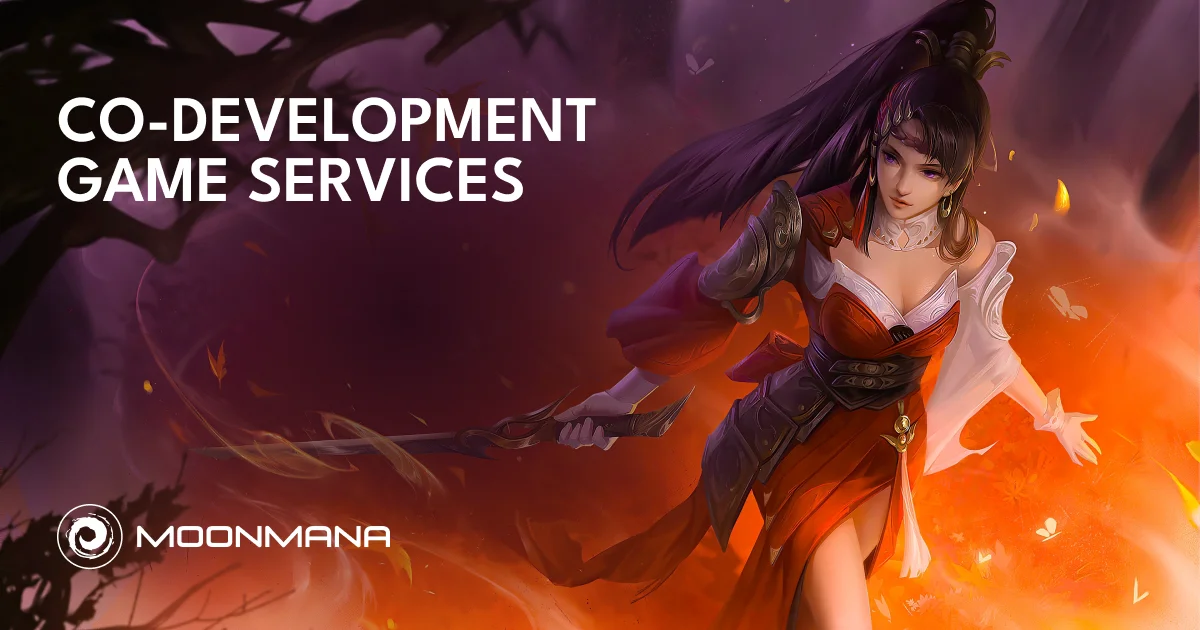
What is Web3 Gaming?

Discover the phenomenon of web3 IPs that, unlike traditional gaming platforms, allow players to engage with gaming in ingenious ways.
What is Web3 gaming?
The world of gaming is wonderful indeed. It’s been evolving over the years, and it continues to amaze us with mind-blowing innovations and advancements. The worldwide game development industry has come a long way from games with simple gameplay and mechanics to complex feature-rich titles. Things never stand still here, do they? And a big new player is entering the space. We’re talking about web 3 gaming. As one of the most successful recent advancements in both technology and gaming, web3 gaming is worthy of special attention.
Let’s figure out what this concept is about and then dig a little deeper for more details.
Answering the fundamental question, web 3 games, also referred to as play-to-earn, crypto, blockchain, or NFT games, are digital games using blockchain technology as an underlying component of a game’s economy. This means that the in-game assets owned by gamers are in the form of Non-Fungible Tokens (NFTs), so players gain full control over them. The virtual assets can be traded in open marketplaces and even potentially transferred within various web3-based games.
Web 3.0 gaming, in contrast to traditional gaming, features decentralized gaming ecosystems, blockchain-based game asset ownership, play-to-earn, crypto-secured gaming wallets, and metaverse gaming. These innovative games have brought a revolution to the industry by completely changing the players’ experiences and interactions with both games and game developers.
So what is web3 gaming, and what drives the popularity of these blockchain games? This advanced gaming technology changes our perception of video games by allowing gamers to earn money for the time they spend playing.
What are the key features of Web3 gaming?
Presenting a new cutting-edge approach to gaming, web3 games present a new cutting-edge approach to gaming and provide strong competition to traditional games. The value-exchange gaming model offers considerable benefits along with enhanced security, ownership privileges, better control over virtual assets and collectibles, and flexibility for trading them and earning real money.
Here is a list of the basic characteristics of play-to-earn games that you should know.
Complete ownership and interoperability
Self-sovereignty is exactly what draws attention to Web 3.0 games and attracts players all over the world. These games offer total control of in-game assets and allow trading them in different ways. Isn’t asset ownership possible in traditional gaming? It is. However, there’s a fundamental difference. In traditional games, your assets will become useless once you decide to change platforms. When it comes to web3 examples, you can use your in-game items on any other platform.
Transparency
With all of the data safely stored on the blockchain, games are unhackable. Unlike conventional games’ centralized servers, there isn’t a single point of failure. Besides, players receive more control, with no third-party involvement. They can easily track any transaction they need. Furthermore, blockchain-based games use a system of voting to introduce changes in the gaming process.
Player-centric gaming
This kind of decentralized gaming places the primary focus on a player’s experience rather than on short-term profit. The entire gaming ecosystem is built as per gamers’ preferences and requirements. Tailored specifically to cater to a gamer’s passion and skills, this kind of games offers cool rewards and shows players how they can make the most out of games and turn their hobby into something profitable. It goes without saying that this P2E module is a deciding factor for many players.
Security
Blockchain isn’t only about decentralization but also about a high level of security. The blocks containing data are added to the blockchain so that the data inside is impossible to tamper with. Cryptographic security measures protect gamers from losing their NFTs and valuable tokens because of cyber-attacks.
Reduced downtime
In these blockchain-based games, ecosystems run autonomously, requiring minimal maintenance cost and absolutely no authority intervention. This leads to reduced downtime and high scalability.
Good old games integration
Why not upgrade and integrate popular old game models into metaverse and blockchain platforms, making them decentralized? Sounds like an interesting idea that has already come to life with the new gaming tech!
Different types of Web3 games
As you already possess some basic knowledge about this innovative blockchain-based gaming, it’s high time you dive a little bit deeper into its diversifications. Though still in its early days, gaming web 3.0 already has a few sub-categories which are popular among gamers. You’ve probably heard about them because it’s impossible to ignore the buzz around these game types. But still, we offer you a brief outline with the most critical facts.
Play-to-earn
As you can logically guess from the name, in these games, players can literally convert the time they spend playing into real money. Sounds fantastical, but that’s true. Users are rewarded with cryptocurrency or NFTs for gameplay. The basic concept is as follows: the more you play, the more rewards you get. In other words, these rewards, which are digital assets, drive your progress. You have to complete missions to receive assets and then use them as an investment to unlock further rewards or sell on a digital marketplace.
As P2E games are decentralized, there’s no developer control over virtual assets.
As of now, Axie Infinity, Zed Run, Alien Worlds, and Silks are the most popular and successful web3 titles of P2E games worldwide.
Move-to-earn
This type is rather a branch of play-to-earn gaming. The key difference is that in move-to-earn (sometimes also called walk-to-earn) games, players are rewarded for simply moving. It’s too good to be true. Yes, all you have to do is to walk around the in-game world. But bear in mind that you can’t play some move-to-earn games without purchasing crypto in advance.
STEPN is a walk-to-earn game web3 example that rewards players for working out. This sensationalized lifestyle application requires players to buy or rent a pair of NFT sneakers to start earning rewards by performing physical activities.
Metaverse worlds
These are immersive virtual spaces constructed from user-generated content and containing gamification elements to encourage users’ collaboration and socialization. The Sandbox is a buzzing open-world platform where players can buy land and build games.
Fantasy sports
Several platforms like Sorare let users collect digital player cards, build lineups, and get points based on players’ real-life performances. One more platform to mention is Hellebore, where users buy NFTs and predict the outcomes of games across professional sporting leagues.
Risks of Web3 gaming
Web3.0 games are undoubtedly an innovative and prospective approach to gaming. This trend transforms the whole entertainment sector. There’s a long list of groundbreaking advantages we’ve already covered in this blog. However, bonuses always come along with challenges. It’s normal, but you should be aware of them anyway. See what risks are associated with Web3 games.
Uneven economy
There’s always a certain risk of the economy going down or experiencing a crisis. This will obviously affect games, with some of them reaching a dead end.
Security and regulation concerns
Even though Web3 has one of the highest security standards, there are still cases of scams and fraud. But as we watch this area developing at a frantic pace right now, we believe that the situation will be better in the coming years.
Hype
Last but by no means least. It becomes apparent when prices for cryptocurrencies or gaming crypto projects go up crazily. In a Web3 game , regular players shouldn’t experience crypto-rich speculators where the price is artificially increased and access for people who just want to play the game is blocked. Have you heard about the Axie Infinity speculation case? The cost of entry into the game was artificially raised to $1,000.
What Web3 Gaming development services does Moonmana provide?
At Moonmana, we value constant growth and development, and therefore we keep expanding the pool of our services. We don’t mind experimenting and pushing boundaries, and that’s why we stand out. As dedicated game development specialists and true gaming lovers, we always keep an eye on the latest industry trends and market changes in order to catch up with the latest developments and stay relevant.
Blockchain games? Moonmana is right there with them! Regardless of your project’s size, you can rely on us. Our studio develops eye-catching games from scratch and provides outsourcing specialists with the required skill set to join your core team and help you reach your objectives faster.
See what we offer:
Web3 full-cycle game development
Choose Moonmana as a reliable partner and let us take your game project through all of the stages from conceptualization to post-release support and maintenance. We’ll help you make the most out of cutting-edge software, impress your audience with unparalleled decentralized games, and unlock revenue streams with a play-to-earn model powered by blockchain.

You don’t need to look for seasoned experts in various areas – our team brings together the best gurus in game development, Unity, and Unreal engines, blockchain tech, NFT integration, and tokenomics. We promise a final result of the highest standards and of exceptional quality.
Co-development
Scaling up your core team with strong external skills is definitely a good idea! Let’s join forces and create an outstanding blockchain-powered game by leveraging next-gen technologies. Boost your development capabilities with well-versed programmers, designers, or artists.

Our team works with various genres and styles, so we’ll offer smart and efficient solutions. First, reach out to us to discuss the project’s specifications. We’ll analyze your current state to define what specialists you need. Then we’ll assemble a team or select a single expert based on your requirements and demands regarding skills and experience.
Contact us to develop a lucrative and engaging play-to-earn game.
FAQ
Why is it called Web3?
The roots of the term are considered to date back to 2014 when Ethereum co-founder Gavin Wood coined Web 3 as the vision of a new, better Internet. Web3 refers to a blockchain-based ecosystem that can be described as decentralized, immutable, free of intermediaries, and cryptographically verifiable.
What is the unique technology in Web3?
Web3 gaming relies on blockchain technology, cryptocurrencies, and Non-Fungible Tokens as basic elements of a game’s economy. Web3 presents a decentralized network with absolute ownership rights for users. They obtain full control over their virtual assets and can trade them or even transfer them within multiple games.
How do Web3 games make money?
Web3 projects allow people to earn real money for playing. You can complete missions, progress, or simply walk around in-game environments and get rewards in the form of NFTs which can then be traded. Furthermore, some open-world metaverses create unique opportunities to buy virtual land and build shops where digital assets are sold.
What is Web3 in crypto?
In the context of crypto, Web3 is taken as the infrastructure and tools for the creation and use of decentralized applications (dApps) and decentralized finance (DeFi) platforms that utilize blockchain technology. This allows for transactions and interactions without any intermediaries.
What is the advantage of Web3 gaming?
Decentralization is said to be the biggest advantage. This means full control over virtual assets for players, not developers. As the assets are owned by players as NFTs, they can easily trade them or use them on any other platform. In other words, these games provide great monetization opportunities. Last but not least, Web3 titles are player-centric and community-driven.
Conclusion
Web3 and the latest web 3.0 gaming has brought a revolution to the entire entertainment sector by transforming the gaming industry with metaverse and blockchain technology integration. What had seemed impossible just recently is now real.
It has introduced democratic gaming by eliminating central game administrators and providing space for decentralization. Moreover, it scales up the financial aspect of the gaming sector, too.
Will blockchain technology be the next big thing in gaming? Yes, it surely will. The move towards Web3 is already inevitable. Gaming is an ever-evolving industry constantly striving to be at the cutting edge of technological advancement. There’s no doubt this sector will be at the forefront of adopting the technologies emerging from the massive shift to Web3.
The future of gaming seems to be exciting, doesn’t it?
